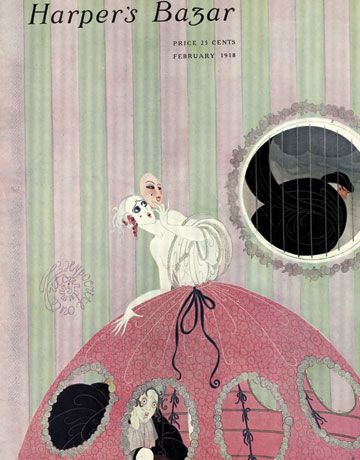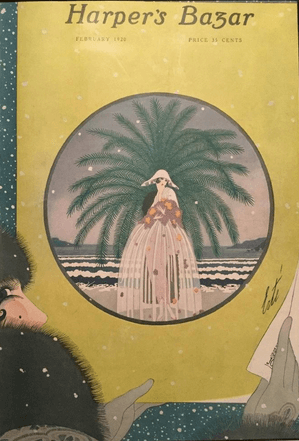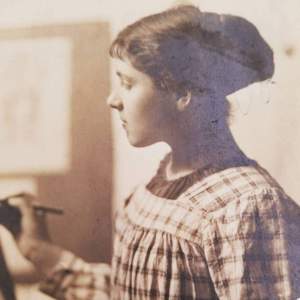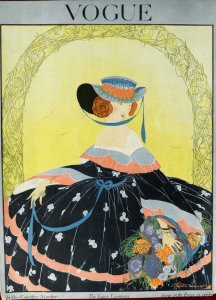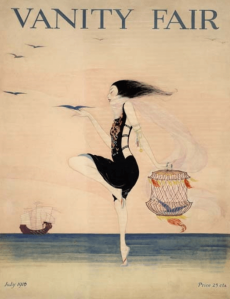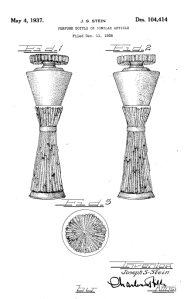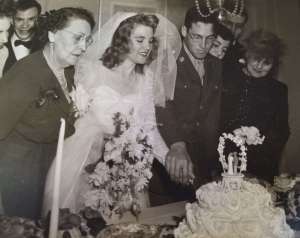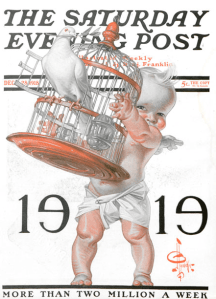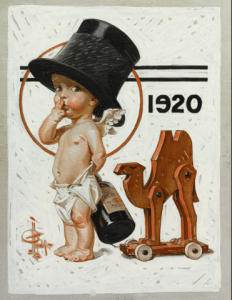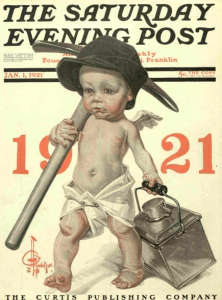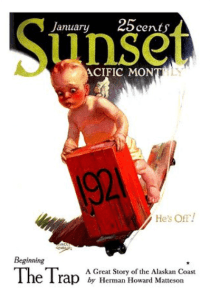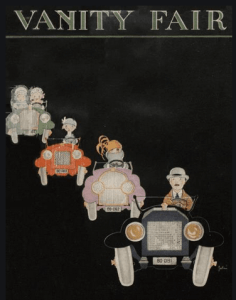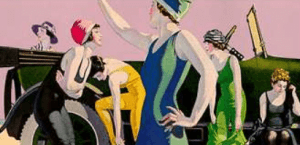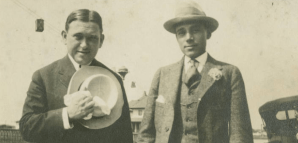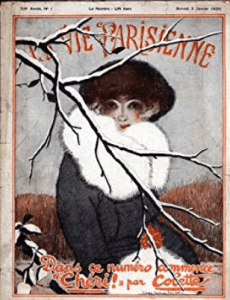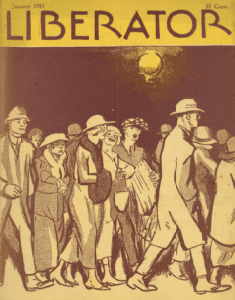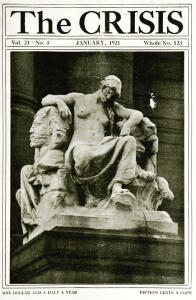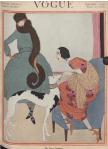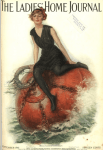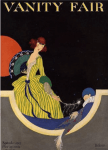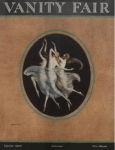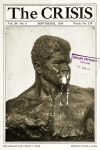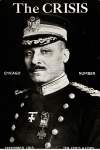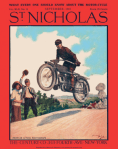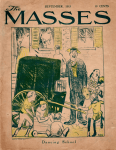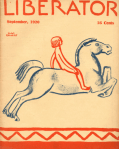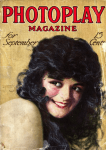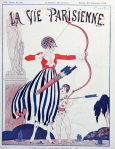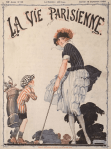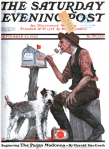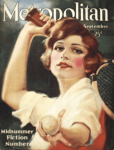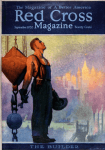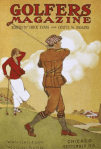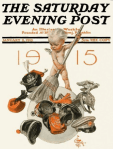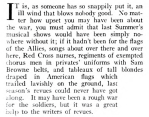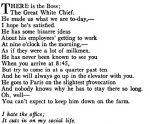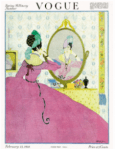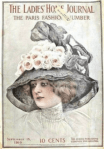People sometimes complain that the world of a hundred years ago is so picked over that there’s nothing left to write about.* After spending a year reading as if I were living in that period, though, I can tell you that there’s a treasure trove of subjects just waiting to be turned into books, articles, dissertations, or academic projects. Here are ten topics that I’m mystified that no one has gotten to yet.**
1. Archiving Erté’s Harper’s Bazar covers
Over the (yikes!) almost four years of this project, I have spent many happy hours finding online copies of Harper’s Bazar covers by Erté, the legendary art deco artist, designer, and crossword puzzle clue stalwart who worked as the magazine’s regular cover artist from 1915 to 1936. I included him in my Thanksgiving lists of 10 1918 People I’m Thankful For and Ten 1919 Illustrators I’m Thankful For.***
But I have also spent many unhappy hours searching for Erté covers in vain. HathiTrust, the Google Books online archive, is missing some issues from 1918 and doesn’t have any at all for 1919 (or from 1923 to 1929, but I’ll worry about that in the future). I’ve found images for some, but not all, of these covers elsewhere, often on Pinterest, which is the source of most of my magazine cover images anyway. Those images that do exist aren’t at the level of quality that these important cultural artifacts deserve.

Someone needs to make high-quality digital scans of the full collection and archive them online**** before the original covers deteriorate any further. (Maybe Harper’s Bazaar—the extra A was added in 1930—has done this, but, if so, the archive isn’t available online, as Vogue’s is.) A book or scholarly article about the covers would be good, too. Get on this, digital humanities people!
2. A biography of cartoonist Percy Crosby
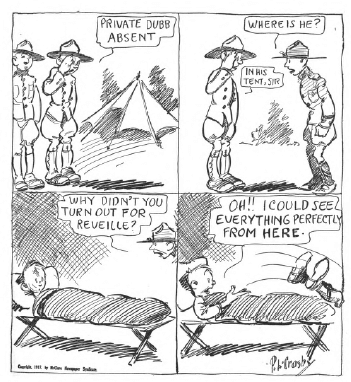
One of the most intriguing people I’ve written about for this blog is Percy Crosby, who penned the cartoon The Rookie from the 13th Squad. The hapless but ultimately stouthearted Rookie was the Sad Sack of World War I. Crosby, who received a Purple Heart after being hit in the eye with shrapnel, went on to create the popular cartoon Skippy, which the Charles Schulz website cites as an influence for Peanuts. He also, I kid you not, won the silver medal in the 1932 watercolors and drawing event in the 1932 Olympics.
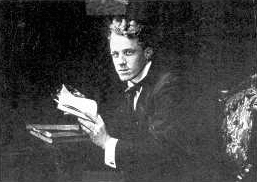
Crosby’s personal life was troubled, though. He ran with a hard-drinking crowd that included Jerome Kern, Ring Lardner, John Barrymore, and Heywood Broun. Following a violent episode, his wife divorced him and got a restraining order, and he never saw her or their four children again. He began taking out two-page ads in major newspapers, espousing left-wing views and taking on targets like the FBI, the IRS, and Al Capone. After a 1948 suicide attempt, he was confined to a mental hospital and diagnosed as a paranoid schizophrenic. One of the purported symptoms of his paranoia was his endless ranting about how Skippy Peanut Butter had violated the trademark on his character’s name. Now, I’m no intellectual property rights lawyer, but that doesn’t sound all that paranoid to me. Crosby himself believed that his left-wing views contributed to his prolonged confinement. He died in the mental hospital in 1964.
A biography of Crosby was published in 1978, but his life, and his long confinement, deserve a closer look.
3. Girl Scout badges through the ages

What gives you a better sense of what was expected of girls in a given era than its Girl Scout badges? Well, lots of things, probably, given that the 1920 edition of Scouting for Girls included badges for telegraphy (“send 22 words per minute using a sounder and American Morse Code”), bee keeping (“have a practical knowledge of bee keeping and assist in hiving a swarm…”), and rock tapping (“collect two or three scratched or glaciated pebbles or cobblestones in the drift”). But, as I discovered during my quest to earn a 1919 Girl Scout badge,***** Girl Scout badges do provide an interesting window into the era. I learned all about caring for sick relatives and found out what a cruel practice plucking egret feathers for women’s hats is.

My own Girl Scout book was written closer to 1920 than to today (it had been around a while, but still!). There are some cool badges in that book, like Observer, where you learn about constellations and rock formations and make a conservation exhibit. Others, like Indian Lore and Gypsy, wouldn’t pass muster today.
The current badges look kind of trippy and feature topics like cybersecurity, coding, entrepreneurship, and preparing for STEM jobs. That all sounds way too stressful and careerist for me. Personally, I’d rather learn telegraphy.
Well, I’d better stop before I end up writing the book myself.
4. Did Daisy Ashford really write The Young Visiters?

The Young Visiters, nine-year-old Daisy Ashford’s unintentionally hilarious account of sometimes unsavory high-society goings-on, became a runaway bestseller following its 1919 publication. The manuscript, written in 1890 or so, was discovered by the adult Daisy and circulated among her friends until it reached novelist and publisher’s reader Frank Swinnerton, who arranged for its publication, with an introduction by L. Frank Baum.
Or so the story goes. Some reviewers at the time were skeptical, and there was speculation that Baum himself was the author. When Ashford died in 1972 at the age of 90, her obituary in the New York Times mentioned the doubts about her authorship.
Here is the opening paragraph. You decide for yourself whether you buy it as the work of a preteen or if, like me, you’re with the skeptics.

Except you don’t have to leave it at that! Thanks to the wonders of modern technology, you can figure out the authorship for yourself. In recent years, researchers have used computer software that analyzes similarities between texts to discover new sources for Shakespeare’s plays and help unmask J.K. Rowling as the author of the mystery novel The Cuckoo’s Calling, published under the pseudonym Robert Galbraith. I wonder what a comparison between The Young Visiters and the works of L. Frank Baum (or maybe Frank Swinnerton) would reveal. Go for it!******
5. The Crisis Press, The Brownies’ Book, and Jessie Redmon Fauset
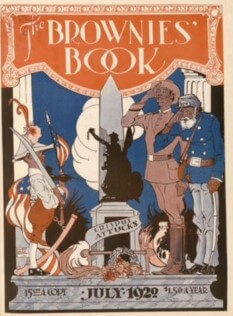

The Brownies’ Book, May 1920 
The life and work of W.E.B. Du Bois is not exactly lost to history. To cite only one recent example of his place in the culture, the novel The Love Songs of W.E.B. Du Bois was an Oprah book club pick and was long-listed for this year’s National Book Award. The Crisis, the NAACP magazine that he edited, is rightly celebrated as a groundbreaking publication for and about African-Americans. Less well-known are the side projects of the magazine’s publishing company, including books like Hazel, by Ruth White Ovington, the first children’s book to figure an African-American protagonist, and The Brownies’ Book, an all-too-short-lived magazine “designed for all children, but especially for ours.” Recent high school graduate Langston Hughes published his first poems in the magazine. There have been a number of academic articles about The Brownies’ Book, as well as a 1996 anthology, but the magazine and the Crisis Publication Company’s other ventures deserve to be better known today.

While you’re at it, how about a biography of The Brownies’ Book managing editor Jessie Redmon Fauset, who was a major figure in the Harlem Renaissance?
6. Women Illustrators of the 1920s
Career opportunities for talented women in the 1920s were limited, but magazine illustration was one field where women could, and did, succeed. Their work and their lives are worth revisiting.
Why did Helen Dryden, once the highest-paid woman artist in the United States, end up living in a welfare hotel?

How did Gordon Conway make it to the top of her profession without taking a single art class?
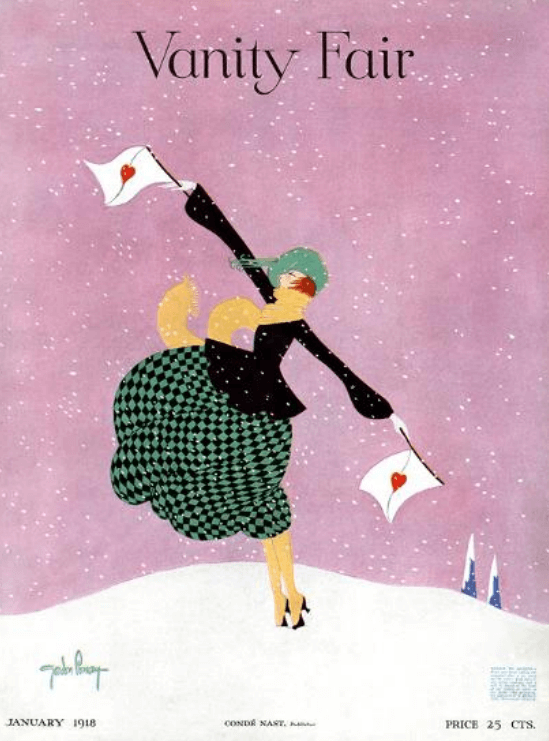
Why did talented illustrator Rita Senger disappear from the covers of Vogue and Vanity Fair in 1919? (Well, I told you all about that here.)

As for Neysa McMein, suffragist, Saturday Evening Post illustrator, best friend of Dorothy Parker, lover of Charlie Chaplin, Ring Lardner, Robert Benchley, and others, I just want to spend a winter afternoon reading a gossipy account of her life.

And there are lots more! Edna Crompton!

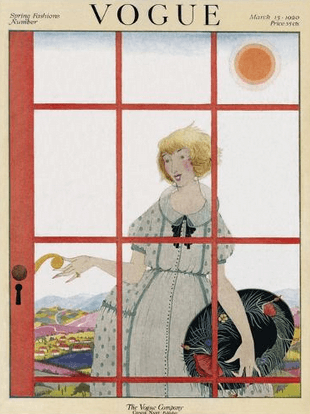
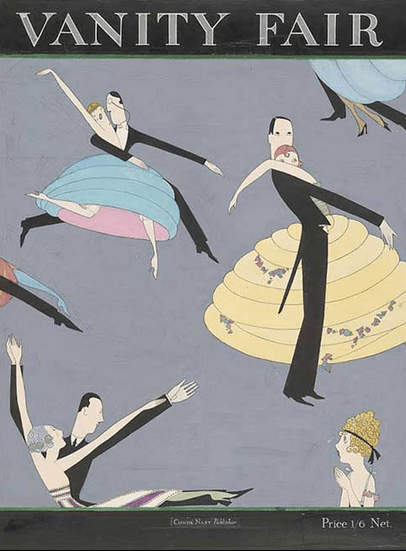
More on these amazing women, please!
7. The Life of James Hall
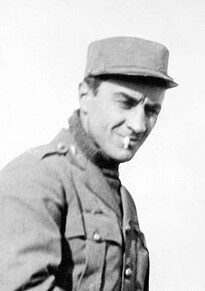
In May 2018, I read a May 1918 New York Times article about the apparent death of popular aviator Jimmy Hall, who had been shot down behind enemy lines. I decided to Google him to see if by any chance he had survived. But James Hall is a common name, and I kept getting articles about the co-author of Mutiny on the Bounty. Eventually I realized that the courageous aviator and the successful writer were…one and the same!
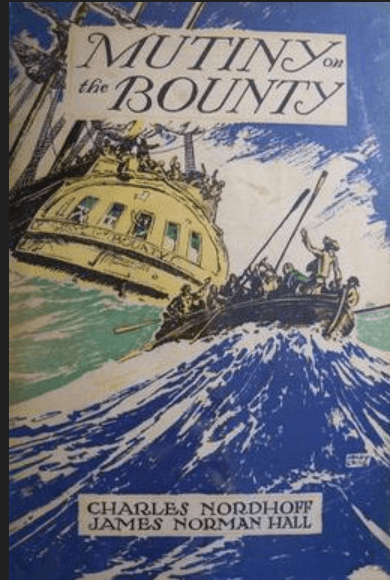
Hall, it turned out, had been captured by the Germans. After the war, he moved to Tahiti, where he and co-author Charles Nordhoff penned Mutiny on the Bounty and other best-sellers.******* His wife was partly of Polynesian descent. Their son, cinematographer Conrad Hall, won three Oscars, including one for Butch Cassidy and the Sundance Kid.
Amazingly, no one seems to have written a biography of this fascinating man. If I haven’t done enough to persuade you to take on this project, it would definitely require a trip to Tahiti, where his modest house is now a museum.
8. Edna Ferber biography and revival
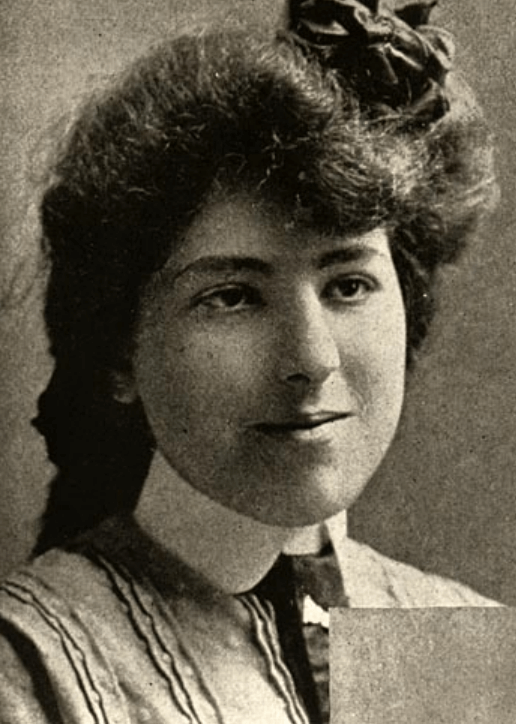
Edna Ferber checks a number of boxes to spark contemporary interest: she took on racism and sexism in her novels and short stories, and she may have been a lesbian. On top of that, she was a wonderful writer, at least judging from the early novel and short stories that I’ve read, featuring the dreams, disappointments, and, very occasionally, triumphs of department store saleswomen and accountants and stenographers. Ferber was a regular at the Algonquin Round Table, which would make for entertaining research.********
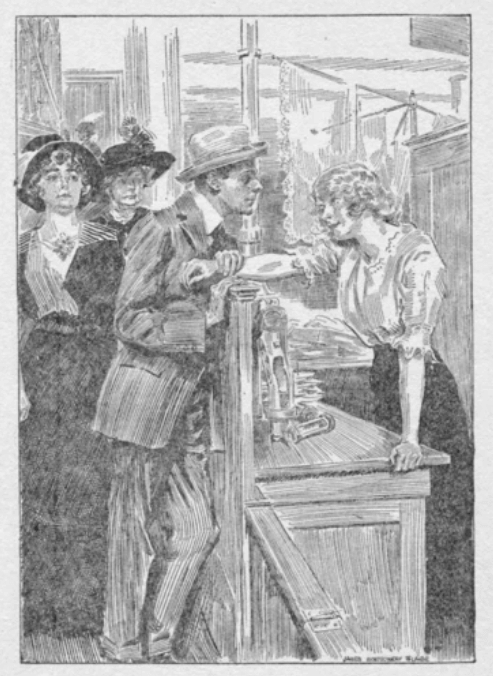
Harper Perennial Classics has reissued some of Ferber’s novels, which is a good start, but she’s due the kind of revival that Tim Page sparked for novelist Dawn Powell a few decades back when he published her diaries, her letters, and a biography. Any volunteers?
9. The Illustrators of New Rochelle, New York

High on the list of nonexistent books I’m longing to read is a group biography of Norman Rockwell, Coles Phillips, the Leyendecker brothers, and the other illustrators who turned suburban New Rochelle, New York, into one of the country’s most important artists’ colonies. If you can believe Wikipedia, New Rochelle was the source of more than half of the illustrations in major publications in the early 1920s.
I want SO much to read about J.C. Leyendecker’s romantic relationship with the model for his Arrow shirt ads

and about his brother Frank’s short life and tragic death.

I want to read about Coles Phillips’ apparently happy marriage (one of all too few I’ve read about in the period) to his wife Teresa, who served as his primary model, “making up in keen interest and endurance what I lacked in pulchritude,” as she wrote in the Saturday Evening Post after his death in 1927 at the age of 46.
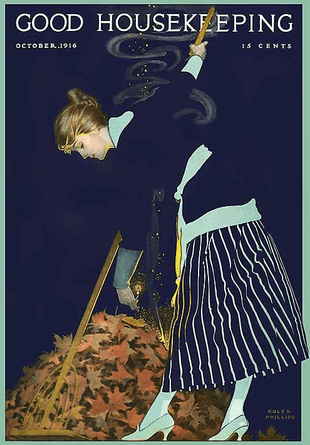
I want to read about Normal Rockwell’s…well, I can’t think of anything I want to read about Norman Rockwell. But, if you write it, I’ll read it!
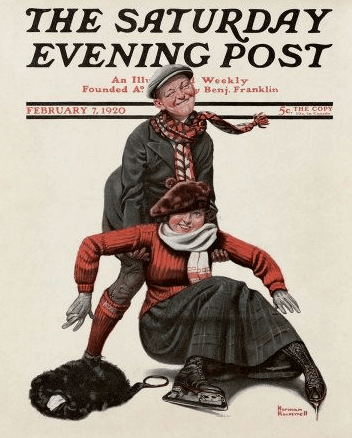
10. This one’s for me!
By now, you may be wondering why I’m asking the rest of the world to do all of these projects and not saving any for myself. Well, don’t worry—I’ve set aside a project, or two, or three. I’m not sure when I’ll be able to finish, or, um, start them, but I look forward to telling you more when I can.
In the meantime, get to work, everyone!

*Actually, this is mostly an amateur opinion. The academics I know who are working on this period have more than enough to keep them busy.
**That I know if. If I’m wrong, please let me know!
***I’ve noticed recently that some of my old posts have gone all Alice in Wonderland on me, with small photos suddenly huge, like this squiggle from the Thanksgiving 2019 post.
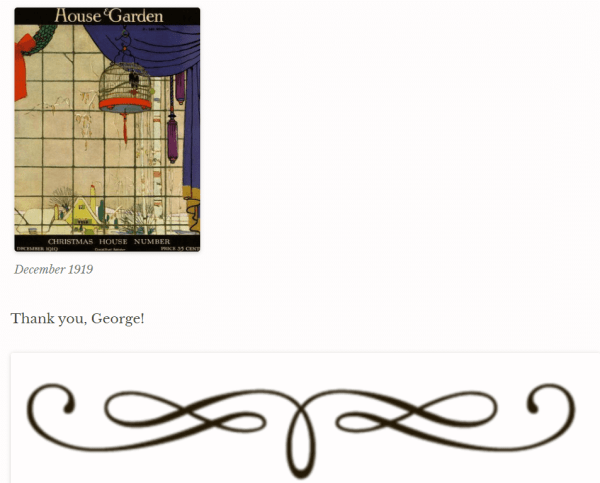
I’ll get with WordPress to see what this is about and in the meantime am resizing the giant photos as I come across them.
****Or at least the covers (currently up to 1925) that are out of copyright.
*****Actually, a 1916 Girl Scout badge. My logic in using 1919 in the title was that this was the Girl Scout book being used 100 years ago at the time of the post. If I had known that this would go on to be by far my most popular post, read by many people who didn’t have a clue about my 100 years ago project, I would have used the 1916 in the blog post title.
******Go for it yourself, you might reasonably say. I tried once, with some different texts, and it’s kind of hard.
*******Speaking of fake child authors, Hall confessed in 1946 that he had written the critically acclaimed 1940 poetry collection Oh Millersville!, supposedly the work of a 10-year-old girl named Fern Gravel.
********That’s Ferber on the bottom right corner, looking like she’s wearing a skeleton mask, in the Al Hirschfeld cartoon of Algonquin Round Table members. I can’t post it here because it’s still under copyright.


